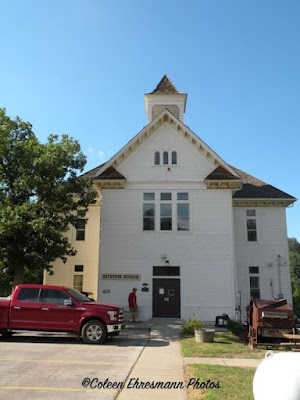Our geocaching road trip included a drive on Iron Mountain Road. We don't drive that road often usually because we are driving the truck and it is very busy with motorcycles this time of year. Although a very scenic drive, it is also full of hairpin curves, one-way tunnels, and pigtail bridges so the driver and in my case, the passenger keep eyes on the road and the on-coming traffic.
CC Gideon and Peter Norbeck rode horse from Custer Game Lodge to design the Iron Mountain Road that was finally built in 1932. The elevation drop presented major engineering challenges for the design. Norbeck wanted to keep the road rustic and it remains so to this day; a NARROW two-lane paved road with bridges, tunnels and hairpin curves.
the road at the top of the pigtail bridge
the road at the bottom of one of the pigtail bridges
a two tunnel on the road
one of four tunnels we drove through
the tunnels are large enough for tour busses
and the reason for the drive on iron Mountain Road
Then we spent some time in Keystone. And probably for the first time on one of our Black Hills visits, we did NOT stop to shop! Again, the town was busy with visitors, but not as busy as it has been on some of our visits. We also noted some new eating/dining options and more family entertainment options. We were there to visit Historic Keystone.
We had been to the cemetery before in 2013 to find a geocache and that was the reason for this visit.
click to enlarge
unusual fencing at the entrance
The Keystone School was built between 1899 and 1901. Located on the hillside overlooking the booming gold town, it was a very large and impressive building of Victorian architecture which made the Keystone community of more than 2000 residents very proud.
now a museum
Built for 300 students the first enrollment in January 190l was 158 students which also was the largest. The school had 5 large classrooms and a library. After the Holy Terror Mine ceased operations in June 1903, the population of Keystone rapidly dwindled. Soon the school hired only two teachers. Classes continued until 1988 when the school had only eight students. Over the years many clubs and organizations used school rooms for their meeting. The Catholic Church used a room for a couple of years. It is now on the Historic Register.
This is the original hand-hewn log school built in the early 1890s. It was originally located on Second Street and was moved to this location in 2003. It housed forty students in eight grades and one teacher with few books.
creeping bluebell
fleabane

















No comments:
Post a Comment
Thanks for your comments!